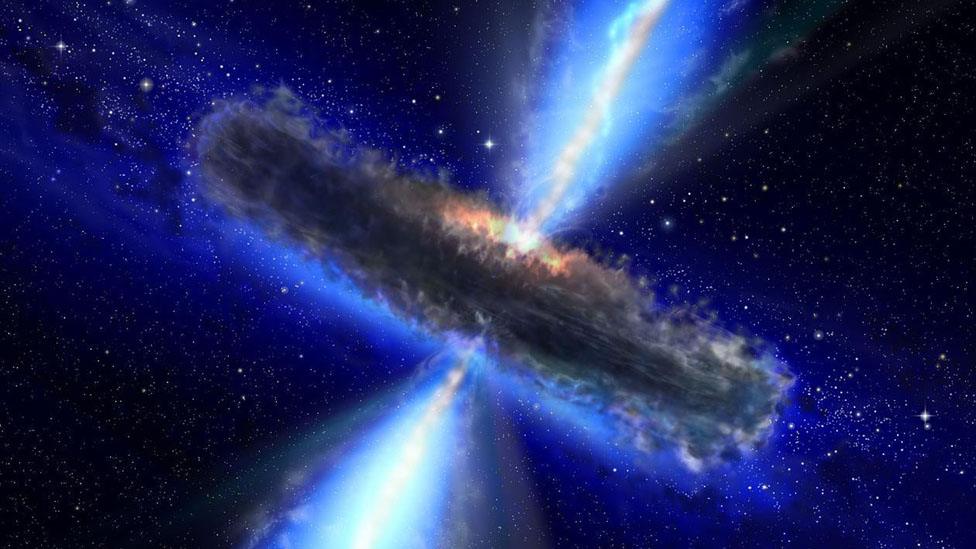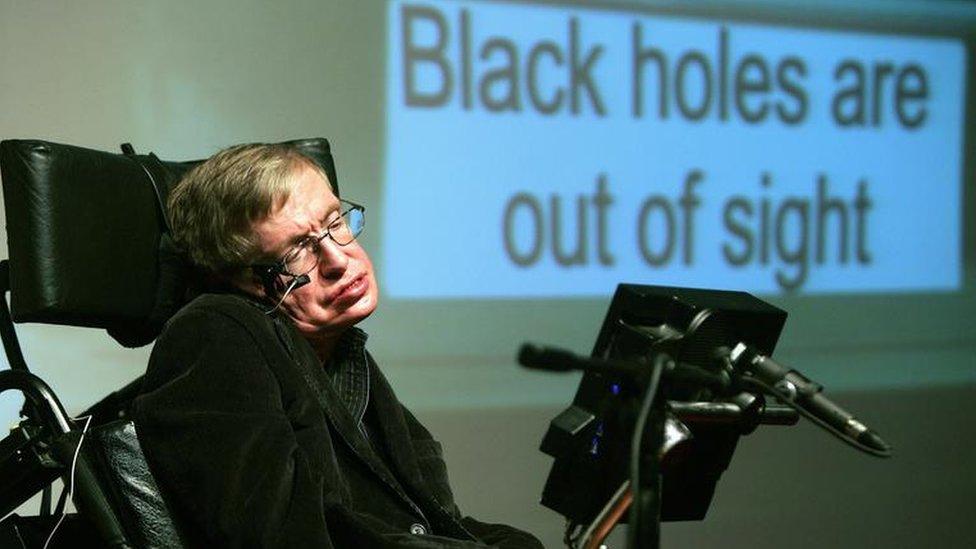Taking the temperature of black holes
- Published

Researchers at Heriot-Watt University in Edinburgh have developed a new formula to quickly calculate the temperature of a black hole.
They say it is simple and powerful, and offers fundamental insights into space and time.
The formula owes its origin to observations made on the Union Canal near Edinburgh 185 years ago.
The idea that black holes have temperatures at all came as something of a surprise to researchers.
They have so much mass and exert a gravitational pull so strong that nothing - not even heat or light - was expected to escape.

Professor Stephen Hawking predicted black holes would emit thermal radiation
However, Professor Stephen Hawking changed that.
In 1974, at the age of just 32, he proposed the concept of what is now called Hawking radiation.
He predicted black holes would emit thermal radiation and gradually evaporate.
This is still at the frontiers of theory, with different schools of thought on the exact process.
Contradictory answers
One major issue is calculating how much radiation a black hole gives out.
Accuracy has proved elusive. Complex calculations have produced contradictory answers.
At Heriot-Watt, Dr Fabio Biancalana and his colleagues have come up with their new formula to quickly and precisely calculate the Hawking radiation temperature from any kind of black hole.
Dr Biancalala says they tested it against all published types of black holes - whether static, rotating, charged or even more exotic - and it always produced the exact Hawking temperature.

A coffee mug and a doughnut are the same in topological terms
The key is the mathematical discipline of topology.
It deals with the properties of space - and not just outer space.
Topology treats things according to the fundamental properties they possess, even if they are bent, crushed, folded or otherwise deformed. Tearing, cutting, gluing or poking holes would be cheating.
One celebrated example is a coffee mug and a doughnut.
In topological terms, they are the same. That's because each is a lump of stuff with a single hole in it. In theory you could even squish the mug into the shape of a doughnut if you fancied (provided you didn't mind how it tasted).
New formula
"We discovered that only the topology of black holes matters when it comes to determining Hawking radiation," says Dr Biancalana.
"Not the size, not the electric charge, the spacetime in which they are embedded, or how they spin around their axis.
"Black holes can be physically very different, but if they have the same topology they will emit the same amount of Hawking radiation."

In effect the new formula counts the holes of a black hole and the spacetime that surrounds it (yes, even black holes have holes in them).
This information is enough to determine the temperature.
Dr Biancalana calls it a "magic formula".
"For years scientists have been theorising about four dimensions and whether space has more dimensions we are still ignorant of, and now we know only two dimensions really matter in the description of all these astronomical monsters."
Which leads us to the banks of the Union Canal, not too far from the Heriot-Watt campus on the outskirts of Edinburgh.
'Something fundamental'
It was there that the Scottish engineer John Scott Russell first described what he called a "wave of translation" - a solitary wave that kept its shape while travelling at a constant speed.
He hoped his work would lead to a better canal barge. These days - now called solitons - these waves are important in laser physics and fibre optics.
The Heriot-Watt team realised that, as solitons and black holes shared identical mathematical properties, Hawking radiation would follow the same rules.
Dr Biancalana says it takes us a step closer to understanding how the universe works.
"This must mean something fundamental about space and time," he says.
"Now we just need to find out what."